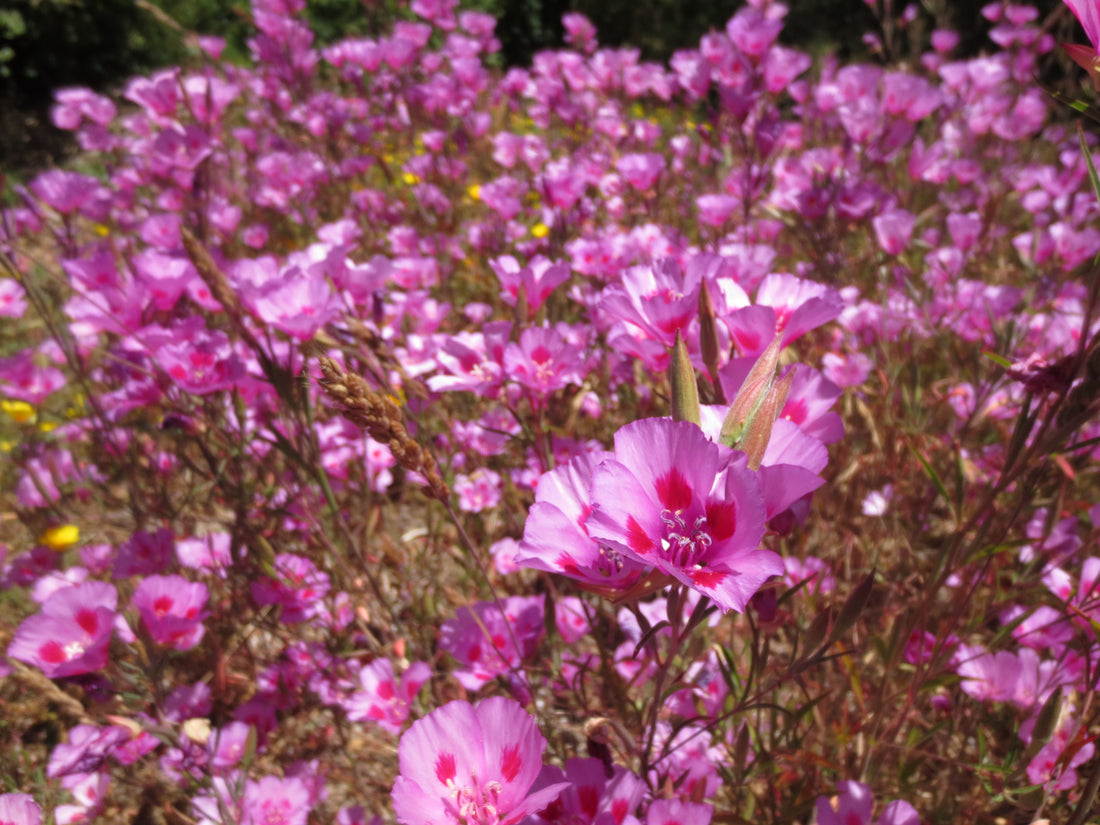
Clarkias; The Useful and the Beautiful
Which clarkias will you plant this year? Clarkias as much as any native California genus lend themselves to horticultural frivolity and play. Sturdy and tough, easy to grow, they are adaptable in containers, or to broadcasting in the ground. They reseed vigorously and can be sown throughout the year for bloom from May through October. We even once had Clarkia amoena growing in a container for over three years, coming to resemble a small blossoming tree with a semi-woody stem.
In nature, different species of clarkias thread through the golden grasses on dry hills throughout California, their vivid colors intoxicating, and their survival a reminder that the dry time in California is not naturally a drab one. Far from it. Almost every part of California has its own suite of Clarkia species, from which the gardener can choose.
We grow them in ceramic containers, in large wooden boxes, under trees, shaded by buildings, in full sun or part-shade, as one among many in a wildflower mix or by themselves. They can be watered and coddled, or neglected and subjected to tough love. Use them as part of a restoration garden by sticking to the locally native or as a horticultural celebration, combining and mixing different species. We can't say enough about this genus, so we'll let the pictures speak for themselves.
The seeds were an important indigenous food, used by many tribes to make pinole. They are host plants for Clark's Sphinx Moth, and their nectar is also important; see this site for more information.http://www.butterfliesandmoths.org/species/Proserpinus-clarkiae
Clarkia Identification Tips:
Note whether they are deeply lobed, like Clarkia concinna, or not, like Clarkia amoena. Then note presence of markings and their locations, such as at the base, (Clarkia rubicunda) or in the middle of the petal (Clarkia amoena). Note whether buds are upright (Clarkia amoena) or drooping (Clarkia rubicunda). Don't get confused by the term "godetia." - an old common and botanical name no longer in use.
